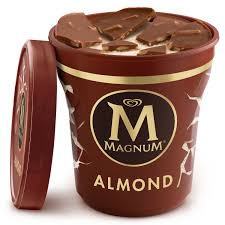
The advanced recycling technology that makes this possible transforms previously unrecyclable plastic waste into a valuable resource. The rPP waste can be re-processed infinitely, as the closed-loop recycling method preserves the quality of the material, thus reducing the need for virgin plastic. Initially, 600,000 of the new tubs were launched in Belgium, the Netherlands and Spain in 2019. This year, more than 7 million will be introduced across other European countries. And from 2021 onwards, the new packs will be rolled out globally. By the end of 2020, all Magnum Pints tubs in Europe will be produced with rPP, which means over 160,000 kilograms of recycled plastic. Our goal is that, by 2025, all Magnum tubs will be made with recycled plastic. The full roll-out across all European countries is another exciting step towards a more sustainable future. These days, consumers – rightly – expect all packaging to be sustainable. By keeping our plastic material in the loop, we are contributing to a healthier planet and preventing plastic pollution. A process didn’t exist, so we helped develop one Although there have been rPP options available for beauty and personal care products for some time, there were previously no solutions approved for use in food-grade packaging. So, we collaborated with SABIC – a global leader in diversified chemicals – to develop one. The rPP used in Magnum is not obtained by traditional mechanical recycling, as this is not suitable for food contact packaging. We use an innovative recycling process that transforms the plastic waste into a resin with the same characteristics as virgin food-grade resin. This new technology allows us to recycle low quality, mixed plastic waste that would otherwise most likely be destined for incineration or landfill. It is not currently possible to produce food-grade rPP with any other form of recycling system. The move is part of Unilever’s wider global packaging commitment to halve the company’s use of virgin plastic by reducing its absolute use of plastic packaging by more than 100,000 tonnes and accelerating its use of recycled plastic by 2025. Plastic has its place, but that place is not in the environment The rate at which we are currently using the world’s resources means that, before long, they will simply run out. We need to not only build recycling into our everyday routine, but also focus on new technology, to reduce the use of plastics as a matter of urgency. The circular economy aims to change how we make, use and ultimately dispose of materials. It ensures that the world can continue to support the needs of a growing population while, at the same time, reversing our current unsustainable levels of pollution. Plastic is a valuable material. It is crucial for the safe and efficient distribution of products, and it has a lower carbon footprint than many alternative materials. So, it has its place. That place is inside the circular economy – where it is reused, recycled or composted. And where it is kept in a loop, to stop it from ever finding its way into the environment.







